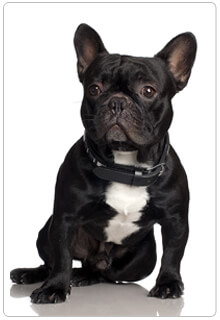

Changes in body temperature can cause dangerous complications. Core body temperature may be monitored, especially if your dog is undergoing a prolonged surgical procedure.If an arrhythmia is detected, your veterinarian can make suitable changes in anesthesia. It can detect abnormal heartbeats called arrhythmias. An electrocardiogram (ECG) monitors your dog’s heart rate and heartbeat pattern.By monitoring your dog’s heart rate, your veterinarian can make anesthetic adjustments quickly.

Anesthesia and other factors, such as surgery itself, can affect heart rate. A heart rate monitor counts your pet’s heartbeats per minute.The surgical veterinary technician: A technician is present during the anesthetic event to monitor your dog’s vital signs and to help adjust anesthetic levels, under the direction of the veterinarian.Because the most common complications include low blood pressure, decreased heart rate, shallow breathing, and decreased body temperature, the following monitors are important to help reduce your pet’s risk during anesthesia.

Patient support might include administration of IV fluids and drugs to prevent or treat complications and warming of the patient to prevent loss of body temperature. Monitoring of your pet’s vital signs enable recognition and prevention of complications, or timely treatment of them should they arise. Anesthetic gases are the most appropriate agents for maintenance of anesthesia. At this point the patient is unconscious and the procedure is underway. Maintenance of anesthesia with patient monitoring and support. Such a tube is also necessary to maintain anesthesia with inhalant gases. Placing an endotracheal, or “breathing”, tube protects the airway and lungs from accidental inhalation of foreign material such as stomach contents, saliva, blood, water, cleaning paste, or tartar. The patient is Pre-oxygenated to charge the lungs with oxygen and along with the IV induction step, promotes a smooth, controlled transition to unconsciousness via a short-acting anesthetic.Įndotracheal intubation. Presence of an IV catheter is especially important if an emergency drug is needed to treat a complication. This allows for the administration of IV drugs and fluids, as well as the IV induction of anesthesia, which is safer and less stressful than mask induction. Once the animal is relaxed from the premeds, an IV catheter is put in place. Pre-meds are specifically chosen for your pet, based on his or her unique anesthesia profile. Amongst other functions, they provide preventive pain management, reduce stress, and minimize the necessary dosages of other anesthetic drugs. The pre-anesthetic medications, “Pre-meds” as they’re referred to in the hospital, have many benefits. General anesthesia itself involves a combination of drugs. An anesthesia plan can provide guidance for prevention, recognition and treatment of anesthetic complications. Complications such as low blood pressure, shallow breathing, low body temperature, slow heart rate, and delayed recovery from anesthesia can all be anticipated and planned for during the assessment stage. Here is where they could be assigning an anesthetic risk factor and determining if any specific interventions might be helpful to reduce anesthetic risk for your pet. The veterinarian will assemble any needed medical history and lab results, and perform a physical exam. To help you better understand how we tailor anesthesia for your pet below is an outline.Īnesthesia occurs in several steps, with opportunities at each step to minimize risks for your pet.Īnesthesia starts with an assessment of your pet’s health. How this is accomplished is via an examination and pre-anesthesia bloodwork. This number is certainly low but I feel still not low enough therefore, anesthesia need to be tailored to the patient to help prepare for, and minimize complications. Several studies recently conducted to determine the risk of death under anesthesia in an otherwise healthy animal is estimated at 0.06% or 1/1667. Anesthesia can be scary and we all have our preconceived perceptions of, and concerns about the risk of anesthesia.


 0 kommentar(er)
0 kommentar(er)
